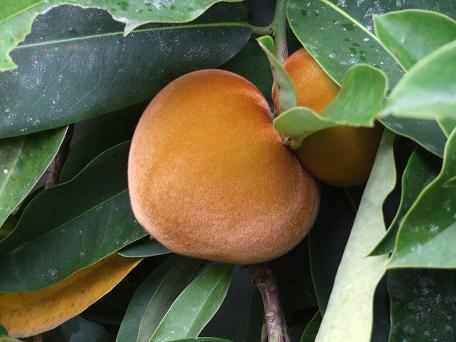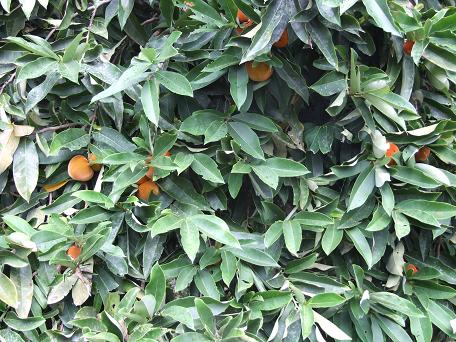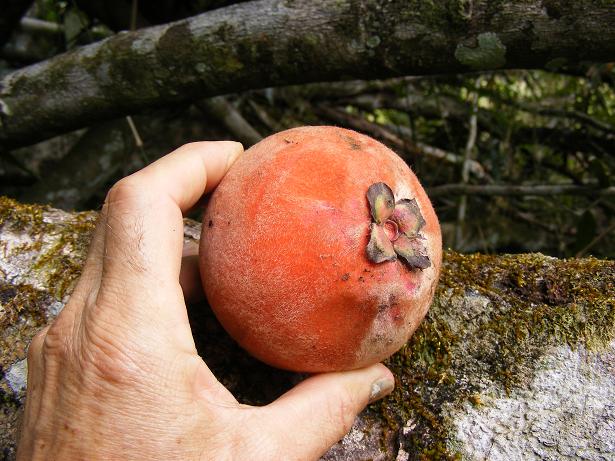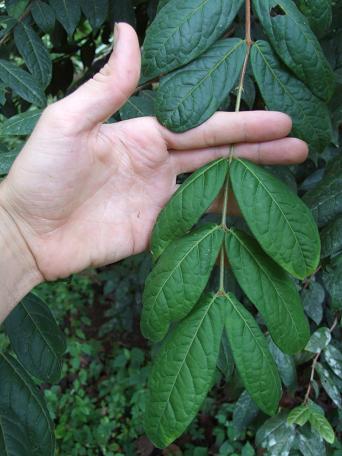Note: Following is a paper I wrote years ago (2006), when I first became interested in the history, evolution, and eventual Spanish-inflicted decline of Aztec Chinampa agriculture. The essay draws from much of the past and present research devoted to understanding these systems. It is the first part of a two part paper. The second part concerns the raised – bed / canal systems of Los Llanos de Moxo, Bolivia.
Please feel free to contact me with any questions / additional info at spencer (dot) woodard (at) gmail (dot) com
—
Chinampa: Raised-bed hydrological agriculture
By Spencer Woodard
“And when we saw all those cities and villages built in the water and other great towns on dry land, and that straight and level causeway leading to Tenochtitlan, we were amazed…Indeed, some of our soldiers asked if it was not all a dream” (Spanish chronicler, Bernal Diaz del Castillo)
“There is little doubt that the chinampas just south of Mexico City represent the most sophisticated version of Mesoamerican swamp agriculture. The complexes are extensive and most are strictly rectilinear, oriented roughly in accord with the sacred direction of Teotihuacan. The hydrology of the system has always had to be closely managed in order to prevent flooding, as well as to introduce sufficient fresh water to maintain levels and a slight flow in the canals. Production is year round and finely tuned. All in all, this is an engaging garden landscape or, rather, it was until mechanized commercial cultivation and suburbanization led to the obliteration of many chinampas” (Siemens 1980).
Adaptive systems involve careful planning, implementation and organization but offer the most logical approach to effective biodiversity conservation within food and resource producing systems. The raised-bed hydrological agricultural systems of antiquity offer an example of adaptive land management.
Chinampa describes a system, or network, of raised fields on low man-made islands in the middle of lakes, marshes and floodplains. Currently, the most intact, refined examples of chinampa agriculture can be found in the Xochimilco/Chaleco lake basins in the central valley of Mexico. Looking further, we find that similar land management techniques have been employed throughout the Americas. Another one of the more impressive and extensive examples can be found in Los Llanos de Moxos, in the Beni region of Bolivia. In the following pages, I will explore the importance of these sites as working examples of sustainable human living systems.
The examples of traditional raised-bed agricultural fields, such as those in Mexico and Bolivia, are widely regarded as the most productive and ecologically sustainable forms of agriculture in pre-Hispanic Mesoamerica (Chapin 1988). “In a very real sense, chinampa agriculture has represented a self-contained and self-sustaining system that has operated for centuries as one of the most intensive and productive ever devised by man” (Chapin: 9). It has been generally concluded that the level of technology reached in agriculture during this time was rarely equaled anywhere else in the world at the time. The use of human labor, hydraulic technological sophistication and administrative complexity were correspondingly high (Parsons, 1991; Torres-Lima et al. 1994).
In light of the current human-induced pandemic of global destruction, the theory and practice behind chinampa hydrological agricultural systems may become increasingly important for the conservation of agro-biodiversity and as a means for humans to adapt agricultural production to cope with volatile changes in global climates and weather patterns. The dwindling chinampero culture represents one of the few remaining groups of humans on earth who hold the knowledge and technique to build, cultivate, and maintain this highly restorative, productive and sustainable agriculture technology.
There exists a common misconception, that the Aztecs invented chinampa technology, in fact they did not. Although it has been widely recognized that societies of the late Aztec period developed the most sophisticated models, it is now clear that Chinampas were employed long before by lowland Maya. The chinampas of Chaleco and Xochimilco were inherited by the Aztecs through the expansion of the empire and domination of the regional indigenous population, the Xochimilicans. Indeed, archeological evidence suggests that throughout Mesoamerican prehistory raised-bed agricultural system use has been extensive and widespread, adapted to a diverse variety of climates and landscapes. (Leon-Portilla, 1992; Torres-Lima et al. 1994).
The Xochimilcas established themselves at the foot of the Cuauhtzin Hills of Mt. Ajusco on a peninsula that juts into Lake Xochimilo. All of their structures were made out of materials derived from the lake. As their numbers expanded the Xochimilcans began to create land on top of the lake basin wetlands by building up rectangles of vegetation (tulle reeds) layered with, organic matter and mud, excavated from the lake bottom. The resulting raised platform and water canal network functioned perfectly with gravity providing for adaptation to a wide range of weather patterns. Eventually thousands of artificial interconnected islands were constructed. It is thought that the city of Chaleco was originally settled by Chelmeca Indians, who practiced the same chinampa building techniques. The two cities resisted Aztec domination for over two hundred years. Finally, around the middle of the fifteenth century they submitted to Aztec rule. Despite the change in government, the two cities remained intact, expanding throughout the duration (Torres-Lima et al. 1994)
There is little doubt among experts that the human population residing within the valley of Mexico had easily topped one and a half million by the time of the Conquest. The Aztec capital of Tenochtitlan is thought to have supported a population of up to three – hundred thousand people, which would have been around five times the size of King Henry’s London at the time. The immediate suburbs of Tenochtitlan are thought to have contained another 200,000 humans and, in addition, well over a million resided in the greater surrounding area including the greater 3,000 square mile central valley of Mexico. It is widely surmised that the majority of food stuffs consumed by this population came largely from the extensive, 1,200 square kilometer chinampa raised-bed and canals network built as inter-communal hydrological and agricultural infrastructure (Redclift 1987; Chapin 1988: 10; Outerbridge 1987; Garavaglia 1992: 572-573).
Descriptions of the Capital by the first Spanish conquistador/chroniclers baffle the mind for we can only barely comprehend such a human living environment:
It was bigger than Paris, Europe’s greatest metropolis. The Spanish gawped like yokels at the wide streets, ornately carved buildings and markets bright with goods from hundreds of miles away. Boats flitted like butterflies around the three grand causeways that linked Tenochitlan to the mainland. Long aqueducts conveyed water from the distant mountains across the lake and into the city. Even more astounding than the great temples and immense banners and colorful promenades were the botanical gardens – none existed in Europe (Mann 2006)
The first hand account of Francisco Lopez de Gomara (1553) describes the Aztec capital as a city…
…built on water, exactly like Venice. The whole body of the city is in water. The wide and pleasant streets are of three kinds. Some consist entirely of water with a great many bridges, others are completely solid, and a third type combines solid and water, with people walking on the dry half and using boats on the other half… Almost all houses have two doors: One leading to the pavement and the other to the water on which they travel by boat.
It has been estimated that 10,000 hectares of chinampa fields, under intensive cultivation, would have been sufficient to supply at least half a million people with basic food staples (Torres-Lima et al. 1994: 39). The Chalco/Xochimilco site is situated in an endorphaic lake basin at an altitude of over 2,240 meters and surrounded by a high mountain range whose highest peak reaches 5,452 meters. Within this region there is evidence that over twelve thousand hectares, or 120 km sq. of land, was reclaimed in the shallow areas of the lakebed and transformed into a chinampa network yielding around 9000 agriculturally viable hectares, all within an ingeniously irrigated and navigable hydrological aqua/agricultural system (Armillas 1971; Arco & Abrams; Torres-Lima et al. 1994).
Because the productivity of chinampa fields increased with the physical expansion of the system Tenochtitlan deliberately made the commitment to large-scale wetland reclamation so as to secure a subsistence base through this highly productive and accessible agricultural method, which had potential for expansion as long as there was space available (Arco & Abrams; Parsons 1991).
As a result of massive depopulation after the arrival of the Europeans, due to disease, slavery, massacre, missionization, resettlement and war, the vast majority of indigenous inhabitants who had previously played a central role in the structure, composition and day-to-day management of the landscape were eliminated. The Spanish are reported to have been single-handedly responsible for the destruction of these vast and impressive landscapes. In one especially destructive incident, stones were stolen from the massive Nezahuacoyotl dike so that the Spanish could erect their obscene and comparatively rudimentary and inferior colonial cities upon and around the ruins of Tenochtitlan, a site we know today as Mexico City. After the Spanish invasion and the destruction inflicted upon the chinampa systems at Tenochitlan, the spring fed lakes of Xochimilco and Chaleco were steadily depleted. By the end of the 17th century the Indigenous population of the valley of Mexico had plummeted from 1.5-2 million just before the conquest to 70,000 not much more than a hundred years later (Outerbridge 1987; Redclift 1987; Chapin 1988; Barra 1996).
The Tenango and Tlalmanalco rivers, which for millennia had supported the fresh water supply to Lake Chaleco, were diverted and springs were tapped, leaving the lake dry by 1900. Without the time tested and highly effective chinampa network in place, devastating floods would periodically haunt the city. Lacking the experience and adaptive capacity of the Aztecs who had logically and effectively controlled the water for thousands of years, the Spanish tried to get rid of it altogether, digging huge ditches and draining the vast lakes which would ultimately worsen the problem and lead to wind storms of noxious ground salts from the saline lake bottoms, which persists today as Mexico city’s worse natural scourge (Torres-Lima et al. Chapin 1988; 1994; Mann 2006).
The incessant expansion of contemporary Mexico City has not acted kindly upon the chinamperia. At the beginning of the nineteen hundreds the Porfista government decided upon what they thought would be a viable solution to the ever-present problem of insufficient supply of potable water supply. The city would pump water from Xochimilco’s large springs, which for centuries had generated water supply for the chinamperia. Nativas spring, the largest at Xochimilco, would be pumped at two cubic meters a second and the city’s ravenous thirst would be quenched. The project was executed within eight years in which time Mexico City had grown thus demanding more. Additional pumps had to be installed, increasingly bigger and more powerful, until all major springs to Xochimilco were tapped and the lake began to dry up. All of the smaller, peripheral chinampas suffered from the dwindling availability of water due to their slightly higher elevations, canals dried up making irrigation difficult, if not impossible, and the productivity of soil plummeted the surviving generation of chinamperos were forced to sell their property to housing developers and the like. When the outcry of displaced populations and destroyed agriculture technologies were heard by the Mexican government it was agreed that the pumping would be reduced by a little bit and that the city would grant Xochimilicans with the city’s semi-treated black-water sewage. Eventually the city began to suck straight from the groundwater surrounding and directly supplying the chinamperia causing it to sink, “like a dry sponge, the subsoil is compacting and the chinampas are sinking” (Outerbridge 1987: 80-82). By 1988 half of the chinampa’s remaining 2,300 hectares were actively farmed, the rest had been destroyed; consumed by the encroaching sprawl of the great metropolis. Today only two hundred hectares remain and not all of them are in production. What does remain is largely put to use for somewhat disheartening purposes: a place where tourists come to be polled about in the canals underneath the canopy of a brightly painted boat; a place where underpaid laborers are put to work toiling in the fields to grow ornamental flowers to satiate the whimsical desires of wealthy, ornamental flower-buying people; and, finally, as a place for the city to dump its trash and human waste (Outerbridge 1987: 82-83; Torres-Lima 1994).
~
The word “chinampa” is thought to have been derived from the Nauhatl words chinamitl, meaning “reed basket,” and pan, meaning “upon.” The etymology aptly describes the basic idea of chinampa construction, which was traditionally executed by way of piling bed-clay and mud from the lakes, aquatic plants, dry-crop silage, manure and silted muck upon one another in precise layers between paralleled reed fences anchored in the lake bottom. The material used in constructing the raised platforms is excavated so as to create narrow canals which divide elevated areas. The result was a highly ornate, intricate and accessible system.
The historically sustainable components of the chinampa agriculture, as summarized from conclusions drawn by Torres-Lima et al. (1994), are as follows: 1) by conserving renewable resources and reducing environmental impacts, the farmers efficiently managed the lake habitat for agricultural purposes; 2) through recycling practices, they maintained nutrient flow and wastes cycles; 3) by conserving a high degree of biodiversity in time and space, they efficiently used the resource base, increased biological interdependence between crops and pests, and reduced crop failure; 4) to intensify the production and increase sustainable levels of productivity, the farmers relied on regional resources, efficient use of labor, and high technological complexity; 5) by using social and economic factors in decision-making, diversification of crops and maximization of returns were part of the development of self-sufficiency and economic viability of the chinampa system (Torres-Lima et al. 1994: 39).
The southern lake chinampa system of Mexico used an enormous numbers of intricate drainage canals, or zanjas, as well as the chinampa fields and canals. The fields and drainage canals, when aligned and cross-sectioned, form small islands, typically long and narrow ranging in lengths between six and nine meters (Wilken et al. 1969: 223; Armillas 1971: 653; Arco & Abrams 2006). The general layout of fields and canals consisted of long fingers of solid ground, which alternated with navigable waterways, resulting in a tight, intricate configuration. The raised platforms were typically narrow and rectangular in shape. It has been reported that beds traditionally measured 2 to 4 m wide and 20 to 40 m long, surrounded on three or four sides by canals (Torres-Lima et al. 1994: 38-49). Armillas (1971) reports dimensions of 2.5-10 meters wide and up to 100 meters long. The raised portions were usually built by alternating layers of mud scraped from the lake or surrounding swamps and thick mats of decaying vegetation over shallow lake bottoms or in marshy zones. Platforms rose up to a height of 0.5-0.7 meters above the water level, the sides reinforced with posts interwoven with branches. Willow trees were traditionally planted along the edges providing anchor and structural support. The depth of the canals varied, ranging from one to one-and-a-third meters (Armillas 1971; Torres-Lima et al. 1994).
Prutzman (1988) delineates the essential steps in chinampa construction. First, chinamperos use a long pole to find an adequate base for a chinampa and when possible uses a cimiento, the remains of an old chinampa, as the foundation for a new one. Next, strong reeds are “stuck” in the bottom to mark the base dimensions. Then mud is excavated from around the base and piled atop the reeds and cimiento. Mats of water vegetation are then cut and transported to the new chinampa. These dense vegetative mats, or cesped, were primarily made from water lily and tule reeds. A nutrient-rich compost heap is created by layering mats of vegetation to form a thick cap. Mud from the bottom of the lake is mixed with soil from an old chinampa and placed on top reaching a height of about one foot above the water level. A porous base, rich in organic matter, is created through which water easily flows and irrigates through capillary action Lastly, the sides secured with woven reeds, and then willow trees, Salix bomplandiana, are (traditionally) planted around the edges.
An alternative view of chinampa construction is presented by Wilken (1985) who suggests that aquatic plants have no structural role in chinampas; rather, he believes that plots are constructed by “simply extending drainage canals out into swamps or shallow lakes or back into low-lying shores” and then piling the excavated material onto spaces between the canals. While the dredged mud inevitably contains aquatic plants, Wilken maintains that these plants are not important structural component (Wilken 1985). It would seem to me that aquatic plants would be a very important in defining structure on multiple levels. As aquatic plants decompose and turn into earth they serve to maintain overall mass of the raised bed in addition to augmenting the nutritional structure, or content, of the soil. The soil fertility of the raised bed is continuously renewed by scooping up and applying sediments and mud from the bottom of the waterway onto the raised fields, water plants cultivated on the surface of the waterways are intermittently layered with dredged material.
Benefits of the chinampa system are significantly amplified when the fields are tree-lined. Once mature and fully leaved, the trees create a canopy which serves a variety of crucial functions. Trees anchor the beds, creating a boundary and infrastructure. As trees grow larger their fruit and foliage drop off onto the beds and in the water where they function as mulch, or into the water where they decompose and turn into nutrients, or they are eaten by aquaculture species such as prawns, fish, turtles, caiman, and so forth. Planting trees helps enable microclimates; trees both block the wind and hold air in and underneath the canopy which achieves a higher temperatures and humidity levels thus greatly reducing, if not eliminating, frost damage and crop failure that would other wise occur in exposed areas (Arco & Abrams 2006). “Creating channels of warmer air, the morphology of raised fields and associated canals can raise air temperatures as much as 6.3 degrees Celsius above that of dry fields.” (Crossley 1999: 280)
Chinampas also regulate micro-climates by moving and retaining moisture through capillary action (between layers of soil and organic matter), the system promotes the cycle of nutrients between compartments. The result is living soil, with its own respiratory and circulatory functioning. Chinampas are also high in microbial organisms, both in the earth and water, which promote high yields of terrestrial and aquatic plants by continuous cropping and utilization of the diversity of niches.
Ingenious seed germination beds and seedling nurseries were employed in the chinampa system by the Aztecs, the Maya, and, most likely, Mayan predecessors. At the edge of the chinampa bed, at the water’s edge, low terraces are formed. These perpetually moist and humid environments, called “almacigas”, are filled and maintained with ultra-nutritious sludge scooped from the bottom of the chinampa canal with a customized long-handled pole basket called the “zoquimaitl”, seeds are germinated and cared for in these customized environments. “These seedbeds with their concomitant protective and growth promoting mechanisms are the real core of chinampa agriculture. Without them this type of cultivation could function no more effectively than any other kind” (Outerbridge 1987: 80).
Coe (1964) provides details of this practice: At one end of the chinampa near a canal the almaciga is made by spreading a thick layer of mud over a bed of waterweeds. After several days, when the mud is hard enough, it is cut into little rectangular blocks called chapines. The chinampero makes a hole in each chapine with a finger or a stick, drops in the seed or cutting and covers it with either human or livestock manure. For protection against the occasional winter frosts the seedbed is covered with reeds or old newspapers, however the introduction of trees along the perimeters or within the beds is an effective method to create microclimate underneath the canopy, raising the temperature and humidity, thus avoiding frosts. During dry weather the sprouting plants are watered by hand. Once the plant is ready to be transplanted a cube is cut around each small seedling which is then directly placed in its designated place, which has been preconditioned with canal mud and a thick mulch of water plants (Coe 1964).
The highly logical and strategic placement of the almaciga is superior to the conventional centralized nursery system for a few reasons: For one, as mentioned, it maintains its own moisture and humidity, even during drought it is in close proximity to a water source, reducing labor input in the wasteful, time-consuming task of irrigating a large nursery area; plants are propagated exactly where they will be transplanted, maintained and eventually harvested, this greatly cuts back on unnecessary and inefficient transportation and transplants required by a centralized nursery; in addition you are able to mass propagate without using pots, bags and plastic containers; an additional benefit is that plants are germinated in the same soil that they will be transplanted to, this results in heightened rates of growth and productivity, the plant will be better adapted to the soil type. Another point is that the nutrient content of the canal water used for irrigation is far more complete and consistent in composition than any human-fabricated organic or chemical fertilizer.
The chinampa system is not only highly productive in terms of the rate and amount of production per land area and per inputs, but also sustainable in the sense of continuous long-term, year-round productivity. Facing a variety of constraints such as hydrological and climactic factors in addition to increasing demand for food, Aztec chinamperos successfully reached an equilibrium between sustained yields and ecological and management factors (Redclift 1987; Torres-Lima et al. 1994). Interestingly, Berres (2000) reports on how chinampa canals were not simply smaller versions of the lake on which they were constructed, including similar numbers and distributions of species and habitats, chinampa canals have actually been found to be more productive with heightened levels of biodiversity due to the creation of a wide variety of micro-environments (Berres 2000).




